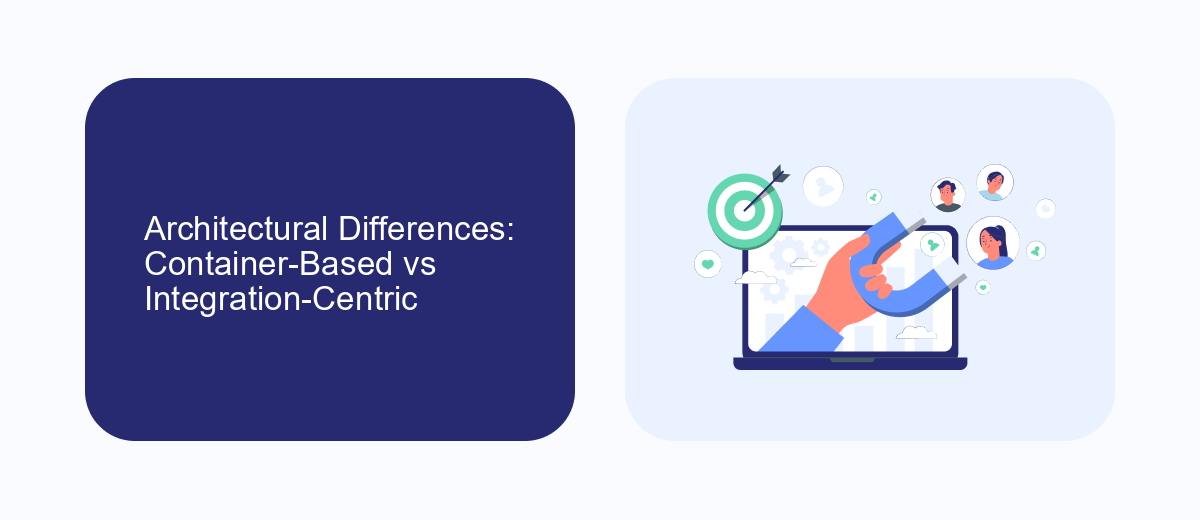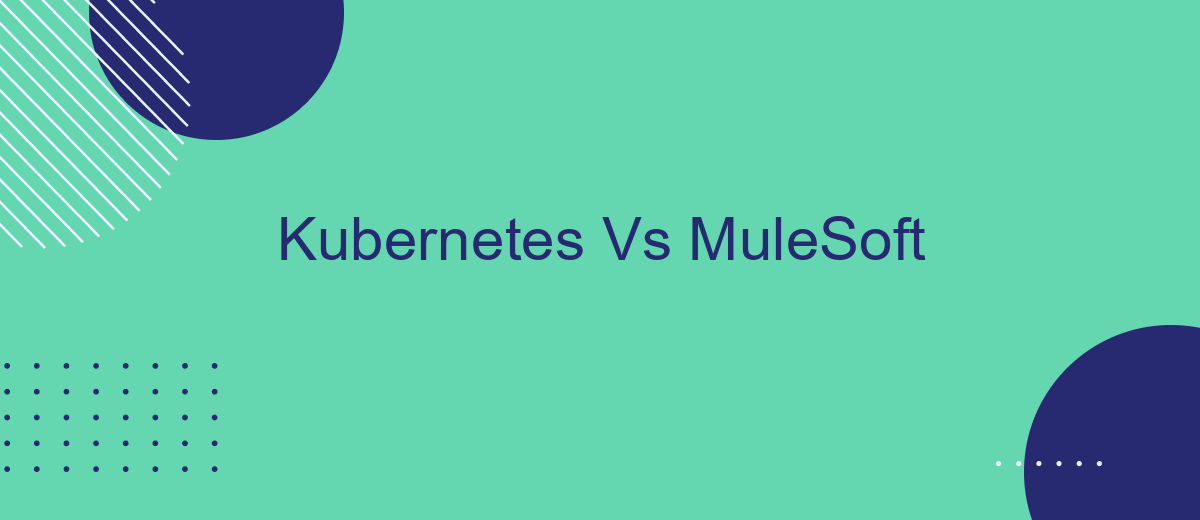In the rapidly evolving landscape of cloud computing and enterprise integration, Kubernetes and MuleSoft have emerged as key players. Kubernetes, an open-source container orchestration platform, excels in managing containerized applications. MuleSoft, on the other hand, offers a robust integration platform for connecting diverse systems. This article explores the strengths and use cases of Kubernetes and MuleSoft, helping you determine which is best suited for your needs.
Kubernetes vs MuleSoft: Overview
Kubernetes and MuleSoft serve distinct purposes in the world of IT infrastructure and integration. Kubernetes is an open-source platform designed to automate the deployment, scaling, and operation of application containers. MuleSoft, on the other hand, is a platform for building application networks by connecting apps, data, and devices with APIs.
- Kubernetes: Manages containerized applications across multiple hosts, providing mechanisms for deployment, maintenance, and scaling.
- MuleSoft: Focuses on API-led connectivity, enabling organizations to create a network of data, applications, and devices through reusable APIs.
While Kubernetes excels in orchestrating containers and ensuring high availability and scalability of applications, MuleSoft shines in the realm of integration, allowing seamless connectivity between disparate systems. For businesses looking to streamline their integration processes, services like SaveMyLeads offer automated solutions to connect various platforms effortlessly, complementing the capabilities of MuleSoft.
Architectural Differences: Container-Based vs Integration-Centric

Kubernetes and MuleSoft represent two distinct architectural paradigms. Kubernetes is a container orchestration platform that focuses on automating deployment, scaling, and operations of application containers across clusters of hosts. It enables developers to package applications and their dependencies into containers, ensuring consistency across different environments. This container-based approach allows for microservices architecture, where each service can be developed, deployed, and scaled independently, enhancing agility and resilience.
In contrast, MuleSoft is an integration platform that emphasizes connecting disparate systems, applications, and data sources. It provides tools and services to facilitate seamless data flow and process automation across an organization's IT landscape. MuleSoft's integration-centric approach is ideal for enterprises needing to unify various on-premise and cloud-based applications. Services like SaveMyLeads can complement MuleSoft by providing pre-built integrations and automation capabilities, streamlining the process of connecting multiple platforms without extensive coding. This integration-centric architecture ensures that all systems work harmoniously, enabling efficient data exchange and operational coherence.
Use Cases Comparison: Automation, Microservices, and Cloud Integration

When comparing Kubernetes and MuleSoft in terms of use cases, it's essential to consider their strengths in automation, microservices, and cloud integration. Kubernetes is renowned for its ability to automate the deployment, scaling, and management of containerized applications. On the other hand, MuleSoft excels in integrating various applications, data sources, and APIs, making it a powerful tool for seamless cloud integration.
- Automation: Kubernetes automates the orchestration of containerized applications, reducing manual intervention and ensuring high availability. MuleSoft automates data flow between disparate systems, streamlining business processes.
- Microservices: Kubernetes provides a robust platform for deploying and managing microservices architectures, offering features like service discovery and load balancing. MuleSoft supports microservices by enabling API-led connectivity, allowing for efficient communication between services.
- Cloud Integration: Kubernetes integrates well with cloud providers, facilitating seamless deployment across hybrid and multi-cloud environments. MuleSoft specializes in cloud integration by connecting SaaS applications and on-premises systems, with tools like SaveMyLeads enhancing its capabilities by automating lead data transfers.
Both Kubernetes and MuleSoft offer unique advantages in automation, microservices, and cloud integration. The choice between them depends on the specific needs of your organization, whether it's robust container orchestration with Kubernetes or comprehensive data integration with MuleSoft.
Deployment and Management: Orchestration vs Mediation

When it comes to deployment and management, Kubernetes and MuleSoft take fundamentally different approaches. Kubernetes is centered around orchestration, managing containerized applications in a clustered environment to ensure efficient resource utilization and scaling. It automates the deployment, scaling, and operations of application containers across clusters of hosts, providing a consistent environment from development to production.
On the other hand, MuleSoft focuses on mediation, acting as an integration platform that connects different systems, applications, and data sources. It provides tools for building application networks, enabling seamless communication and data flow across various endpoints. MuleSoft's mediation capabilities are essential for creating a unified ecosystem, especially in complex IT environments.
- Kubernetes automates container orchestration
- MuleSoft facilitates system integration and data flow
- Kubernetes ensures efficient resource use and scalability
- MuleSoft creates a unified application network
While Kubernetes excels in orchestrating containerized workloads, MuleSoft shines in integrating disparate systems. For businesses needing to connect various applications and automate workflows, tools like SaveMyLeads can also be invaluable, simplifying the integration process and enhancing overall operational efficiency.
Pricing and Licensing: Open Source vs Commercial
When comparing Kubernetes and MuleSoft in terms of pricing and licensing, it's important to understand the fundamental differences between open-source and commercial models. Kubernetes, being an open-source platform, is free to use, but it may require significant investment in terms of time and resources for setup, maintenance, and scaling. Organizations might also need to invest in third-party services or hire experts to manage their Kubernetes clusters effectively.
On the other hand, MuleSoft operates under a commercial licensing model, which means it comes with a price tag. However, this cost includes comprehensive support, regular updates, and a range of built-in features that simplify integration tasks. For instance, services like SaveMyLeads can be seamlessly integrated with MuleSoft to automate lead management processes, thereby reducing manual effort and improving efficiency. While the upfront cost of MuleSoft might be higher, the long-term benefits of streamlined operations and dedicated support can outweigh the initial investment.
- Automate the work with leads from the Facebook advertising account
- Empower with integrations and instant transfer of leads
- Don't spend money on developers or integrators
- Save time by automating routine tasks
FAQ
What are the primary differences between Kubernetes and MuleSoft?
Can Kubernetes and MuleSoft be used together?
Which platform is better for API management?
How can I automate and integrate services using Kubernetes and MuleSoft?
What kind of businesses benefit most from using Kubernetes and MuleSoft?
Are you using Facebook Lead Ads? Then you will surely appreciate our service. The SaveMyLeads online connector is a simple and affordable tool that anyone can use to set up integrations for Facebook. Please note that you do not need to code or learn special technologies. Just register on our website and create the necessary integration through the web interface. Connect your advertising account with various services and applications. Integrations are configured in just 5-10 minutes, and in the long run they will save you an impressive amount of time.

